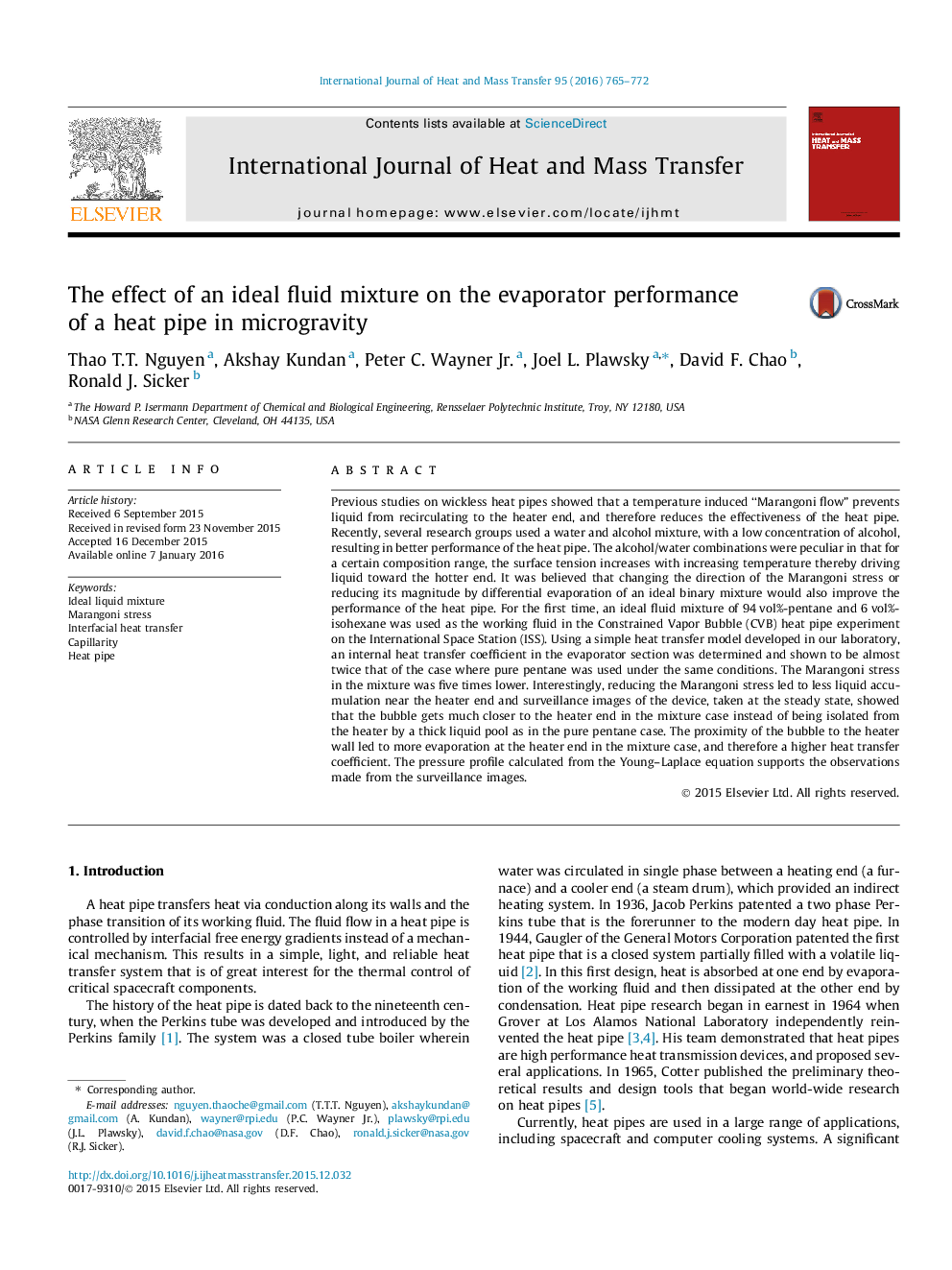| کد مقاله | کد نشریه | سال انتشار | مقاله انگلیسی | نسخه تمام متن |
|---|---|---|---|---|
| 656675 | 1458047 | 2016 | 8 صفحه PDF | دانلود رایگان |
• Ideal fluid mixtures improved the heat pipe evaporator performance in microgravity.
• The mixture internal heat transfer coefficient was twice that of the pure fluid.
• The Marangoni stresses in the pure fluid were five times lower using the mixture.
• Flooding of the evaporator was greatly reduced when a mixture was used.
Previous studies on wickless heat pipes showed that a temperature induced “Marangoni flow” prevents liquid from recirculating to the heater end, and therefore reduces the effectiveness of the heat pipe. Recently, several research groups used a water and alcohol mixture, with a low concentration of alcohol, resulting in better performance of the heat pipe. The alcohol/water combinations were peculiar in that for a certain composition range, the surface tension increases with increasing temperature thereby driving liquid toward the hotter end. It was believed that changing the direction of the Marangoni stress or reducing its magnitude by differential evaporation of an ideal binary mixture would also improve the performance of the heat pipe. For the first time, an ideal fluid mixture of 94 vol%-pentane and 6 vol%-isohexane was used as the working fluid in the Constrained Vapor Bubble (CVB) heat pipe experiment on the International Space Station (ISS). Using a simple heat transfer model developed in our laboratory, an internal heat transfer coefficient in the evaporator section was determined and shown to be almost twice that of the case where pure pentane was used under the same conditions. The Marangoni stress in the mixture was five times lower. Interestingly, reducing the Marangoni stress led to less liquid accumulation near the heater end and surveillance images of the device, taken at the steady state, showed that the bubble gets much closer to the heater end in the mixture case instead of being isolated from the heater by a thick liquid pool as in the pure pentane case. The proximity of the bubble to the heater wall led to more evaporation at the heater end in the mixture case, and therefore a higher heat transfer coefficient. The pressure profile calculated from the Young–Laplace equation supports the observations made from the surveillance images.
Journal: International Journal of Heat and Mass Transfer - Volume 95, April 2016, Pages 765–772
